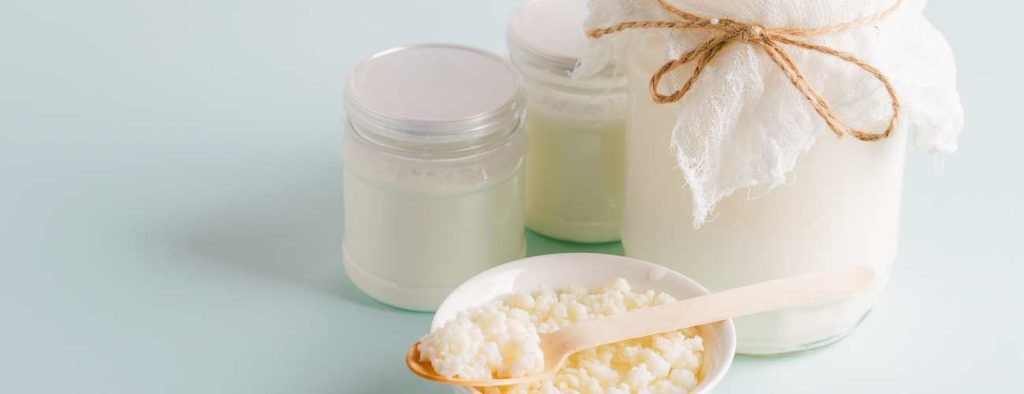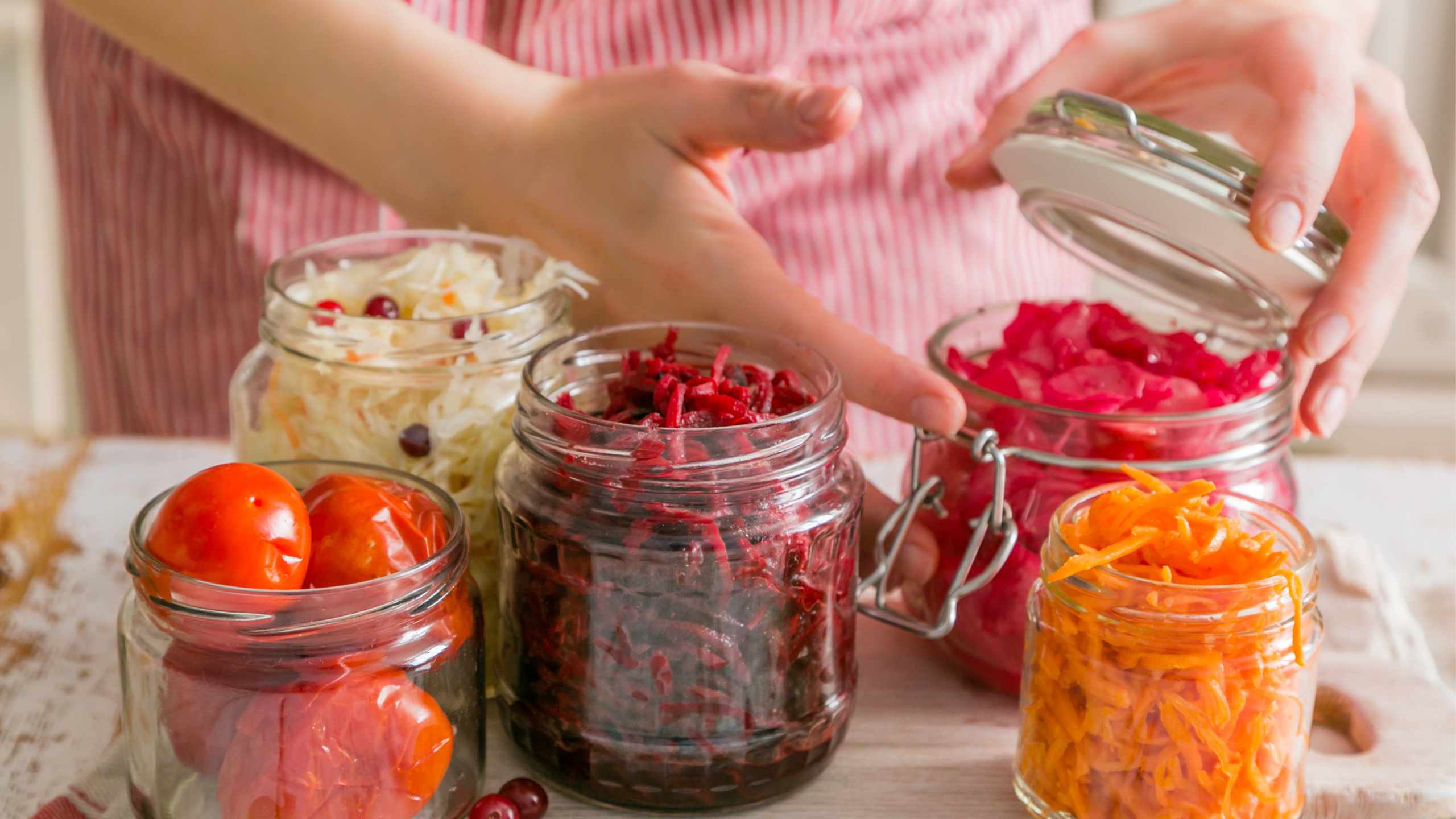Fermentation isn’t just a fantastic method for preserving food; it also brings a host of health benefits. You might be asking yourself: Can you ferment anything? Well, in this detailed guide, we’ll not only answer that question but also take you on a journey to explore the diverse processes of fermentation and highlight the most common foods to ferment.
Indeed, the world of fermentation is incredibly diverse. From vegetables and dairy to condiments and even beverages, nearly anything can undergo fermentation, offering unique flavours and enhanced nutritional value. The possibilities are nearly endless.
Are you not sure if fermentation is your cup of tea? Keep on reading as we are just about to explore the topic in many exciting dimensions – from the basics to the limitless possibilities.
Fermenting almost anything
The go-to choices for fermentation enthusiasts often revolve around vegetables, with classics like sauerkraut leading the way. Additionally, dairy delights such as yoghurt and the timeless sourdough bread are popular contenders in the world of fermentation.
Vegetables
Embarking on the journey of fermenting vegetables opens up a world of crisp, tangy, and probiotic-rich foods. The process involves submerging fresh vegetables in a brine solution, usually composed of water and salt, and letting beneficial bacteria naturally present on the veggies or introduced through a starter culture to initiate fermentation.
This process converts the vegetable’s natural sugars into lactic acid, preserving and enhancing both flavour and nutritional value. As already mentioned, commonly fermented vegetables include classics like sauerkraut and pickles, where cabbage and cucumbers take a flavourful dive into the world of fermentation. The result is a crunchy, tangy treat that not only excites the taste buds but also introduces gut-friendly probiotics, making fermented vegetables a deliciously healthy addition to your meals.
If you are interested to learn about other methods how to preserve vegetables, I encourage you to check out my blog on the top 5 natural vegetable preservation methods.
Dairy
Fermenting dairy products is a fascinating culinary process that transforms milk into a range of delicious goods. Whether crafting creamy yoghurt, flavourful cheese, or tangy kefir, the basics of dairy fermentation involve introducing beneficial bacteria to milk. These microorganisms consume lactose, the natural sugar in milk, and produce lactic acid, which thickens and imparts unique flavours to the dairy product.
The fermentation journey varies: for yoghurt, milk is incubated with a starter culture; in cheese-making, bacteria and enzymes guide the formation of curds and whey. The result is a diverse range of dairy treats, each with its distinct taste and texture, offering an enjoyable exploration into the world of fermented dairy.

Bread
When you ferment bread, you let natural yeast and good bacteria work their magic on the dough. They create bubbles that make the bread light and give it a special flavour. Sourdough bread is a great example – it takes its time to ferment, making the crust chewy and the taste interesting. So, whether you’re into classic sourdough or want to try something new, making fermented bread is a delicious journey into the world of homemade, flavourful loaves.

Other Foods to Ferment
The world of fermentation is stretching way beyond the usual suspects like veggies and dairy.
Almost anything can get the fermentation magic, each bringing a unique taste and feel. Fancy fruity chutneys or adding a bit of zing with soy sauce and miso? Totally doable. How about a fizzy sip with kombucha or a nibble of cured meats like salami? Yep, all on the table. And guess what?
Fermentation isn’t just sticking to the usual crowd. Picture nuts turning into these posh cheeses, or grains giving your porridge a bit of extra touch, and seeds transforming into homemade nut butter – it’s a real flavour fiesta.
And here’s the really cool part – ever heard of fermenting flowers? Yep, even flowers can join the fun, bringing surprising tastes and smells to your kitchen adventures. So, dive into the extraordinary – fermentation is your ticket to turning everyday stuff into a world of tasty surprises!
What are the disadvantages of fermentation?
While fermentation is a fascinating and well-known process with numerous benefits, it’s important to consider potential disadvantages. One obvious drawback is the variability in outcomes. The microbial activity responsible for fermentation can be influenced by factors such as temperature, humidity, and the specific strains of microorganisms present. This variability might result in inconsistent taste, texture, or overall quality of the fermented product. Although, I like the anticipation and sometimes surprising results!
Another consideration is the time factor. Fermentation often requires patience, with some products taking days, weeks or even months to reach the ideal flavour and texture. This lengthy process may be frustrating for some.
Moreover, there’s a risk of contamination, although minimal with proper hygiene practices. Undesirable microorganisms could potentially compromise the safety and quality of the fermented food.
Additionally, for individuals with specific health conditions or sensitivities, such as histamine intolerance, certain fermented foods may trigger adverse reactions.
While fermented foods can be rich in probiotics, promoting gut health, excessive consumption may lead to digestive discomfort for some individuals. It would be wise to strike a balance and consume fermented foods in moderation to avoid potential negative effects.

How to safely ferment
First off, hygiene is your best friend. Make sure all your utensils, containers, and hands are thoroughly clean to prevent the intrusion of unwanted microorganisms. Use non-chlorinated water, as chlorine can hinder the growth of beneficial microbes essential for fermentation.
Precise measurements matter. Follow recipes diligently, especially when it comes to the salt-to-water ratio for creating the brine. This ensures the right environment for good bacteria to thrive and prevents the growth of harmful ones.
Maintaining an ideal environment is crucial. Fermentation works best within a specific temperature range, usually around 60-75°F (15-24°C). Keep your fermenting goodies away from direct sunlight and extreme temperature fluctuations.
Patience is a virtue in fermentation. Allow adequate time for the process to unfold. The duration varies depending on what you’re fermenting, but a general rule is to let your goodies sit undisturbed for the specified time in the recipe.
Lastly, trust your senses. If something smells or looks off during the fermentation process, it’s best to err on the side of caution. While the chances of contamination are minimal with proper practices, being attentive to any unusual signs ensures a safe and enjoyable fermenting experience.



